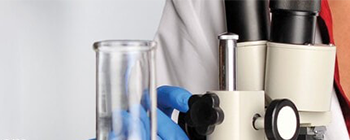Learn More
Invitrogen™ Human FKBP5 (aa 150-237) Control Fragment Recombinant Protein
Recombinant Protein
Supplier: Invitrogen™ RP94652
Description
Highest antigen sequence indentity to the following orthologs: Mouse (90%), Rat (90%). This recombinant protein control fragment may be used for blocking experiments. In IHC/ICC and WB experiments, we recommend a 100x molar excess of the protein fragment control based on the concentration and the molecular weight. Pre-incubate the antibody-protein control fragment mixture for 30 min at room temperature.
FKBP5 is a member of the immunophilin protein family. This family plays a role in immunoregulation and basic cellular processes involving protein folding and trafficking. FKBP5 is a cis-trans prolyl isomerase that binds to the immunosuppressants FK506 and rapamycin. It is thought to mediate calcineurin inhibition. It also interacts functionally with mature hetero-oligomeric progesterone receptor complexes along with the 90 kDa heat shock protein and P23 protein. The gene that encodes FKBP5 has been found to have multiple polyadenylation sites. Alternative splicing results in multiple transcript variants.Specifications
| Q13451 | |
| Blocking Assay, Control | |
| 2289 | |
| 100 μL | |
| 51 kDa FK506-binding protein; 51 kDa FKBP; 54 kDa progesterone receptor-associated immunophilin; AIG6; androgen-regulated protein 6; D17Ertd592e; Dit1; EC 5.2.1.8; FF1 antigen; FK506 binding protein 5; FK506-binding protein 5; FKBP prolyl isomerase 5; Fkbp5; FKBP-5; FKBP51; FKBP-51; FKBP54; HSP90-binding immunophilin; p54; peptidylprolyl cis-trans isomerase; Peptidyl-prolyl cis-trans isomerase FKBP5; PPIase; PPIase FKBP5; Ptg-10; rotamase; T-cell FK506-binding protein | |
| FKBP5 | |
| Human | |
| His-ABP-tag | |
| -20°C, Avoid Freeze/Thaw Cycles | |
| Liquid |
| ≥5.0 mg/mL | |
| 1 M urea, PBS with no preservative; pH 7.4 | |
| Human FKBP5 (aa 150-237) Control Fragment | |
| RUO | |
| FKBP5 | |
| Unconjugated | |
| Recombinant | |
| RRTKRKGEGYSNPNEGATVEIHLEGRCGGRMFDCRDVAFTVGEGEDHDIPIGIDKALEKMQREEQCILYLGPRYGFGEAGKPKFGIEP | |
| E. coli | |
| >80% by SDS-PAGE and Coomassie blue staining |



